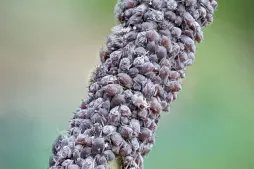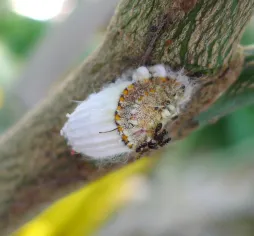Mammillaria spinosissima, a cactus with red spines
Some people call Mammillaria spinosissima the "Red-headed Irishman" because of the color of its spines. Yet this member of the Cactaceae family wouldn't survive long on the wet moors of the Green Isle. This cactus prefers the climate of its native Mexican deserts.
How to recognize Mammillaria spinosissima?
Mammillaria spinosissima measures 30 centimetres in diameter with a wingspan of ten. It is a solitary cactus. However, some specimens can form shoots at their base.
The green, globular or cylindrical stem is irregular in shape. It can narrow and then widen again. As with mammillaria polythele, it is composed of conical tubers. The cells are terminated by brown, red or white prickles.
Dark pink or violet flowers appear in spring. Funnel-shaped flowers crown the top of the stem.
They then give way to fleshy, greenish or purple berries, no more than two centimetres long.
Mammillaria spinosissima is not toxic to animals or humans. However, beware of its thorns, which could injure you when repotting. Don't hesitate to wear gloves for protection!
Our maintenance tips
Your plant needs watering in winter only when the temperature is above 18°C. If it spends the off-season outdoors or in an unheated greenhouse, you can stop watering between November and March.
Watering
Your Mammillaria spinosissima tolerates drought better than too much water.
Water only when the substrate is dry at depth (at least 5 centimetres). Drain any stagnant water from the saucer.
Spray
Your mammillaria spinosissima hates wet foliage. You must not mist the plant.
Repotting
Every spring, repot your Mammillaria spinosissima to give it more space.
Obtain a pierced pot one size larger than the previous one.
Fill the bottom with a very light, draining substrate such as commercially available potting soil for cacti and succulents. Plant your Mammillaria spinosissima in the center and add potting soil. Stop a few centimetres below the rim of the pot to form a watering trough.
Tamp down and wait three or four days for the soil to dry before watering.
Fertilization
To promote the growth of your Mammillaria spinosissima, apply fertilizer in spring and summer.
Add cactus and succulent fertilizer to watering water.
If you're repotting every year, there's no need to add fertilizer. Your plant will find sufficient nutrients in its substrate.
Plantation
When the risk of frost has passed, it's time to plant.
Your Mammillaria spinosissima fears humidity. Plant it in a place where water doesn't stagnate, at the top of a slope, an embankment or in a rockery, for example.
Dig a hole slightly larger than the root ball. You can place pebbles or clay balls at the bottom to improve drainage. Then lay down a layer of substrate. If your soil is light and chalky, you can use garden soil. If your soil is rich and heavy, use potting soil for cacti and succulents.
Plant your Mammillaria spinosissima and fill in with garden soil or substrate. Water to remove air bubbles and encourage rooting.
Seedling
Your seedlings need warmth. Summer is the best time to get started.
Fill a perforated pot with potting soil for cacti and succulents. You can also mix horticultural potting soil for seedlings (two-thirds) with gravel or sand (one-third). Water the soil to keep it moist, but not soggy.
Place your seeds on the substrate. If they're very small, you don't need to cover them with soil.
Seedlings take better if they 're stifled. Place your pot in a mini greenhouse or cover them with a transparent plastic bag. Your seeds also need heat to grow. You can use a heating mat to maintain a temperature of between 23 and 27°C. Place the cuttings in semi-shade.
Open your greenhouse for a few minutes a day and spray the substrate to keep it moist.
Cutting
Cutting is carried out during the strong growth phase, generally in spring and early summer.
After a few years, your Mammillaria spinosissima produces shoots. You can divide them to multiply the plant.
Once the plant has been dug up, separate one of the shoots, with its roots. Beware of thorns! Remember to wear gloves when handling your Mammillaria spinosissima.
Obtain a pierced pot adapted to the size of your cutting. Fill it with a light, draining substrate, such as a mixture of sand and potting soil for cuttings, or potting soil for cacti and succulents. Plant your Mammillaria spinosissima and tamp it down.
The substrate is already damp and mammillaria spinosissima dislikes excess water. Wait at least a week before watering.
Diseases / Threats
Information
| Family | Cactaceae - Cactaceae |
| Type | Mamillaria - Mammillaria |
| Species | Mammillaria spinosissima - Mammillaria spinosissima |
| Lifecycle | Perennial |
| Foliage | Evergreen |
| Exposure | |
| Substrat | |
| Planting methods |
Open ground In pots In tubs |
| Categories | |
| Tags |
Beginner Flowery Small pot |
| Origin |
Central America |
| Hardiness (USDA) | 9b |
| Leaf color |
|
| Flower color |
|
| Fruit colors |
|
Discover plants from the same family
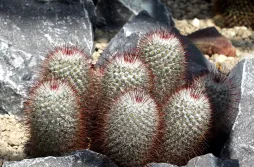
Mammillaria bombycina
Discover
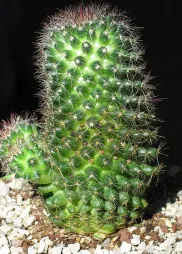
Mammillaria zeilmanniana
Discover
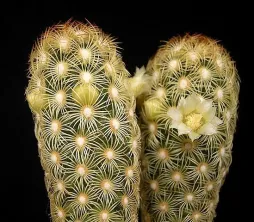
Mammillaria elongata
Discover
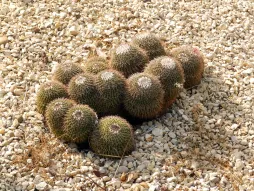
Mammillaria polythele
Discover














